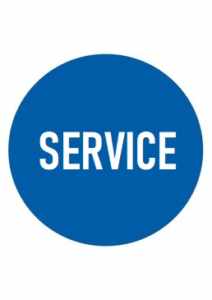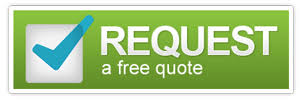Medical Billing Software For Healthcare Industry
Medical Billing Software 101: Finding the best medical billing software is a powerful tool that reduces medical errors and paperwork, allowing providers to focus on patient care. It also eases claims processing by automating tasks such as verifying insurance coverage or following up with denied payments while simultaneously increasing collections rates for your clinic.
Medical Billing Software Helps You Avoid Repetitive Administrative Tasks
Medical billing software can be bought either as a standalone system or may come included with other products. Either way you’ll have access to your patient data and medical records up to date at all times. Common benefits include:
- Confirming patients’ medical insurance coverage
- Properly code insurance claims
- Posting payments and EOBs
- Improve collection and debt
In the medical billing industry, there’s more than one type of software that can be used.

The most basic systems help providers generate paper statements based on demographics and billing codes input by you or your staff members while more sophisticated software also allows a provider to submit claims electronically as well as pull advanced reports for commonly requested information at any time during business hours from anywhere with internet access without downloading anything onto their own computer first – it just takes seconds.
Medical Billing Software Features To Consider
With all the different medical billing software out there, it can be difficult to know which one is best for you. We have compiled this list of features so that your search will be easier in no time at all.
Verifying Insurance: The software checks ahead of time to make sure that all services and procedures will be covered by the patient’s insurance.

Medical claims processing: In today’s fast-paced world, it can be difficult to keep up with the ever-changing medical insurance industry. Luckily there are companies that take away this burden from professionals so they don’t have anything but their patients’ best interests in mind while providing quality care and generating revenue for providers who need payment as soon after services are rendered as possible.
Medical claims scrubbing: Before you submit that claim, make sure it has been audited. This will help reduce denied or rejected claims and increase approval rates.
Medical Billing Software For Each Healthcare Industry
From inpatient healthcare to outpatient health there are different types of medical billing software to match your unique needs.
Inpatient healthcare software: Hospital and nursing home administrators need to submit claims using UB-04 forms. These types of billers typically require a system designed for inpatient billing, although some outpatient healthcare software systems have a module that can be used with this type of automated document submission process.

Outpatient healthcare software: This category of private practices includes those that submit claims to Medicare, Medicaid, and other health care providers on the CMS-1500 form. They need a medical insurance billing software program for businesses with varying sizes; however, more robust programs are required as you grow in size (though not much).
Other healthcare medical software: The modern-day healthcare industry is a complicated one, with many different types of providers and specialists who all have unique needs. For example, chiropractors see patients that pay directly via cash or credit card; dentists don’t typically submit claims to insurance companies or government payers like most other doctors would (their workloads are usually lighter). It’s important when trying to get an accurate estimate on how much something will cost you in advance to know which type of practitioner you’re looking at.
Pros and Cons of Medical Billing Software
Billing software is the backbone of any medical billing office. It codes bills, submits them for payment, and follows up with patients to ensure that they receive accurate treatment records in a timely manner – all while being as efficient as possible.

When going from manually submitting claims to using medical claim software, providers find their collection rates increase. As a result of being more accurate in coding and avoiding errors with this type of system, the staff is able to get back on track faster than before because it’s easier for them when there are no issues or complications during billing processes
The usage rate continued rising after adopting that particular solution which leads us to how beneficial these solutions really can be depending upon what kind time investment may need made upfront versus others available out there today.
Medical Billing solutions help providers make data-driven decisions with advanced reporting tools. These insights can be tough to gain without a solution, but by collecting important information such as which claims get rejected most often and which payers pay slowest it is easier for healthcare professionals like you (the provider) to know your options in order to improve collections.
The same software that helps practices bill patients is also the culprit behind their billing pain.
Maintaining patient records, tracking eligibility for insurance or COLAs – it’s all possible with just one system.
Moving to Digital Claims: The medical billing software will streamline the practice and help them keep track of patients. They’ll no longer have a difficult time keeping up with who owes what, all thanks to this innovative piece of online hardware.
Taking Control: The most common scenario for practices is to bring billing in-house, as opposed to outsourcing it. This decision can be made because of cost saving benefits like getting everything centrally located and having more control over your accounts receivable – which means you won’t have any trouble when someone wants payment.
Modern Software Solutions: When offices decide to replace their existing system, they often do so because it’s outdated and expensive to maintain. However, these same businesses also have trouble using the current billing software that was purchased at some point before – for whatever reason (e.g., integration with electronic medical record software). In this scenario, Web-based Medical Billing Systems are attractive options due both how modern these systems can be while still providing all of your requirements like easier accessibility on mobile devices or the ability to make payments securely online.
Medical Billing Software for Proper Coding
Medical billing software is a great way to stay on top of your medical practices. Software solutions have many features, one being the ability for you or any other user who enters codes in properly so they can be tracked over time and errors avoided with each update automatically submitted by this type of program.
Is Medical Billing Software Worth It?
Medical billing software is often expensive. The costs of installation and maintenance depend on the application’s deployment model; for example, an on-premise system will require upfront licensing fees as well as monthly support payments (which average at about 12%-16% per year). Operationalizes like these typically run in higher price ranges than their cloud counterparts because they need to buy more hardware such as servers or computers with additional storage capabilities made specifically for running solutions from vendors.

Software as a Services (SaaS) applications have a number of benefits for companies, with the primary being that it is low cost and easy to use. SaaS can be purchased in monthly or annual subscriptions which provide licensing fees as well as support coverage from one provider if needed.
In addition, there are many free options available too such as billing software supported through alternative revenue streams like advertising. Those who have the system will be able to get their money back through increased accuracy and efficiency in filing.
What Type of Medical Billing Software is Right for Me?
Integrated or stand-alone solutions: Many doctors’ offices are still using a medical billing system as their only application. The Buyer should look into what type of software package they want, and then multiple options will become available for installation in your practice environment – either with or without integrated scheduling capabilities depending on how much time you have scheduled before moving forward with any decisions about integrating these solutions fully into managing day-to-day operations at work.
On-site or Cloud Solutions: Billing for medical services is a confusing and sometimes stressful process, but it’s getting simpler with cloud-based billing systems. SaaS or cloud-based solutions are now considered by many companies because of their low upfront costs, greater accessibility as well as little to no IT requirements – all factors in favor of these types of programs when considering what type of system will work best on your business plan.
Data Security: When it comes to data security, buyers want a system that is both safe and secure. Medical billing can be very invasive with all sorts of personal information so they’ll need the utmost care when transacting business in this industry
Vendors understand what buyers are looking for; many offer compliant HIPAA systems which meet these standards.
Usability Friendliness: Usability is a question of what kind of user you have and how your system is configured. Medical claims software tends not to contribute much in terms of usability problems because experienced medical professionals can typically adopt most systems quickly, but some complain about hardware issues such as setup time or maintenance needs for servers that may arise from the configuration itself rather than application-related features
Usability consists largely of two things: who will be using it (the end-users) – which determines their abilities regarding learning new tasks if any at all within an interface; secondly there must also exist specific toolsets made available by designers through different interfaces leading up towards completion goals according to task objectives.
Author: Mike Cynar
Mike Cynar brings buyers and sellers together by producing reviews and creating non biased webpages allowing users to share their experiences on various products and services. He and his staff write informative articles related to the medical field, legal, and other small business industries.


Leave a Reply